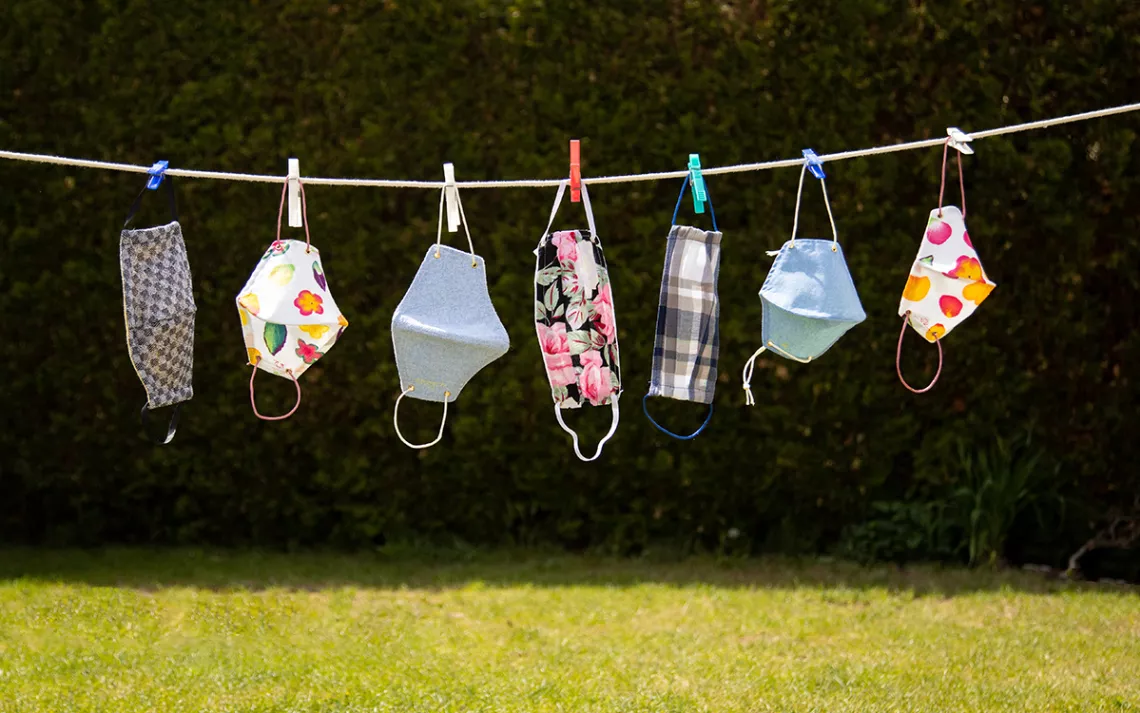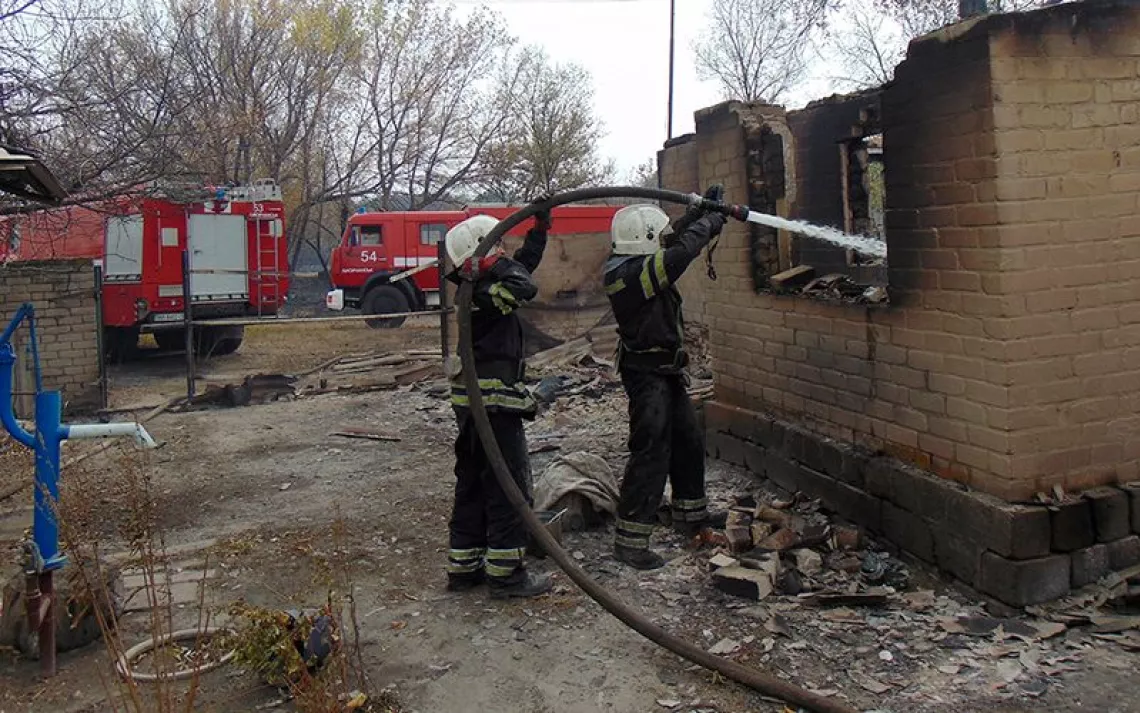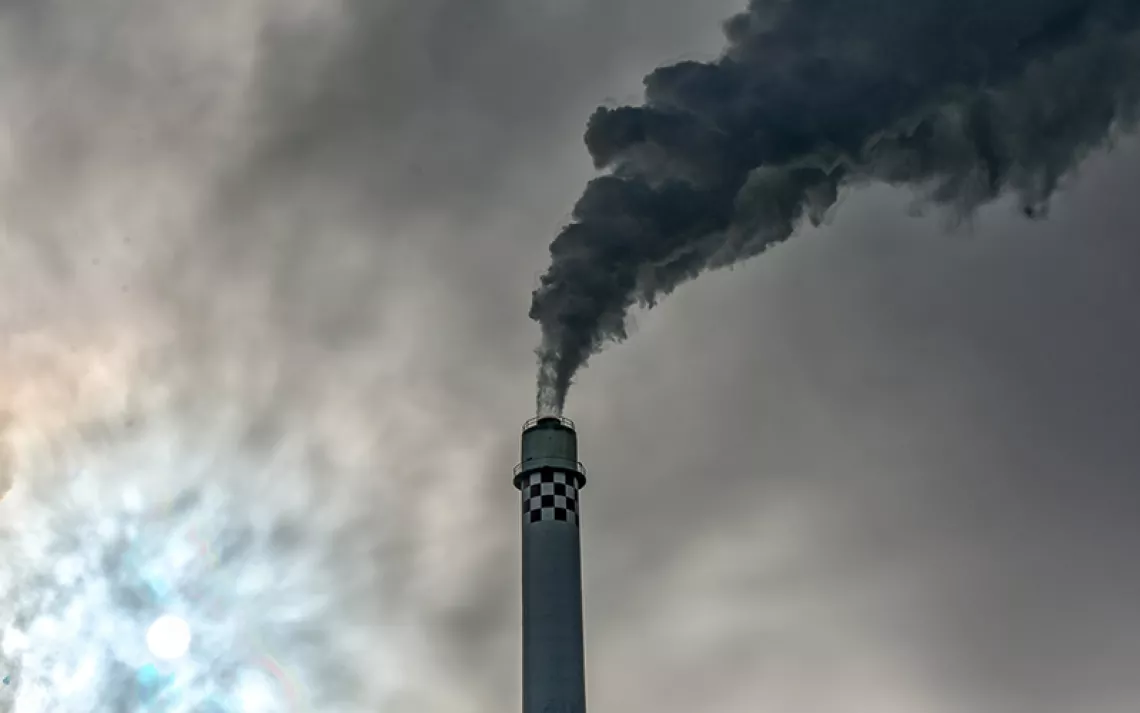What’s the Best Mask for COVID and Wildfire Smoke?
Here's how to pick the right one for you (or make one of your own)

Photo by Lei7/iStock
The air quality where I live in the San Francisco Bay Area has been rated unhealthy on and off for a month. Wildfire ash has been falling like raindrops, potentially containing toxic arsenic, lead, and metals from burning paint, electronics, and treated wood. Wildfire smoke can also make people more prone to lung infections and COVID-19.
Even if you aren’t in the direct vicinity of a wildfire, the air pollution it produces can still affect you. Pollution from the wildfires along the West Coast has now been tracked all the way to New York City.
Make sure you are regularly checking the air quality index (AQI) for your area. Start with AirNow.gov, which rates the air according to sensors that are state-regulated and regularly maintained. That is going to give you the most accurate data on the quality of the air you breathe.
You can also try PurpleAir.com, though its proprietary sensors are sold to the general public, and it’s not clear where the people buying those sensors have placed them. For example, the readings you’re seeing there could be from sensors placed near a highly polluted area with a lot of vehicle traffic. If you do consult PurpleAir.com, make sure to uncheck the Inside Sensors box on its Map Data Layer box so you can separate out the readings from sensors placed indoors and outdoors.
AirNow has a new Fire and Smoke Map that combines AirNow and PurpleAir data.
Regardless of whether there is air pollution from wildfire smoke in your area, chances are you are wearing a mask anyway to protect yourself from the coronavirus. New research shows that a mask cuts your own COVID-19 risk by 65 percent.
But what’s the best kind? Some people are wearing surgical masks; others are wearing respirators. Then there are N95, KN95 (the designation for N95 used in China), N99, P100, and R95 masks. Which one will protect you from air pollution? The coronavirus? Are there masks that can protect you from both?
Unlike single-use surgical masks, which allow particles to get in through cracks, N95s, KN95s, N99s, P100s, and R95s are respirators designed to be a seal for your face (thanks to Elizabeth Segran for explaining this alphabet soup). N, R, or P indicates if the mask is resistant to oil-based particles like solvents and pesticides. N is for non-resistant; R for oil-resistant; P for oil-proof. The number associated with the letter is the percentage of airborne particles the mask filters out: N95 filters out 95 percent of particles, for example. N95s meet the US CDC’s standard, and KN95s meet China’s standard.
None of the common COVID, N95, or P100 masks filter hazardous gases. N95s only filter solid particles and larger liquid droplets and may not provide full protection for youths or people with facial hair. Also, the effectiveness of some KN95s has not been consistent, according to the US Centers for Disease Control’s National Institute for Occupational Safety and Health (NIOSH) tests. N95 masks were designed for worker safety.
But surprise! Capitalism found a way to sell masks that blow smoke. Some are toxic, or won’t protect you from smoke or COVID at all.
Beyond Pesticides reported that the state of Tennessee bought and then recalled masks with a toxic silver (Silvadur 930 Flex) antimicrobial pesticide, which contained 99 percent undisclosed ingredients. Silver can be absorbed into the lungs, and high exposure can cause lung or kidney lesions. Also, there’s no conclusive data that an antimicrobial mask will kill the coronavirus or other pathogens.
There are also people selling fake N95 masks. Here’s how to spot the real from the fake.
Avoid toxic Teflon or water- or stain-resistant masks. Some companies sell water- or stain-repellent or Teflon masks that can have toxic PFAS chemicals.
Single-use masks are obviously not great because they just end up in the landfill. But some people have little choice but to use them because other, more sustainably made masks are less accessible (or not accessible at all). Single-use masks are usually made of plastic from fossil fuels, which break into microplastics. Single-use N95 masks might only be reused safely up to three times in hospitals with a special decontamination machine.
What about bandit-style bandannas, face shields, neck gaiters, and masks with valves? They aren’t recommended by the CDC for protecting against COVID. For example, that hottie with the bandit bandanna might actually take your last breath away. When people coughed behind a loosely fit bandanna, their droplets traveled almost four feet. Droplets from people who coughed with no mask at all traveled eight to 12 feet. Linsey Marr, a professor of civil and environmental engineering at Virginia Tech, told The New York Times that her lab showed that “face shields offer almost no protection against aerosolized particles believed to play an important role in the spread of illness.”
Here are some good mask options:
All-in-one air pollution, COVID, and allergen organic cotton masks for youths and adults
Since there’s a shortage of single-use N95 masks for health-care workers, I use a reusable organic cotton N95 mask. When I asked VogMask and Metamasks who certifies organic cotton in their N99 (N95-equivalent) masks, Metamask was the only one that replied and emailed me its certificate, which was from Global Organic Textile Standard (GOTS). Its website posted lab results on how its masks capture 97 percent of bacteria, viruses, and pathogens at 0.3+ microns—the size of the coronavirus. And it lists the manufacturer of its nanotech, plastic polypropylene and carbon filter, Revolution Fibres.
Unfortunately, each Metamask is packaged in a plastic bag, but it is the best all-in-one mask I found that's dyed with native plants and has adjustable ear loops. Out of all the Metamasks, I recommend the native-plant-dyed black or unbleached organic cotton mask, which come with three replaceable filters. If your air quality index is 150–200, which is unhealthy, the filter will last for about 100 hours; definitely replace when it’s hard to breathe through the mask.
Two or more layers of 100 percent nonstretchy pants cotton for COVID masks
Layered 100 percent cotton (such as flannel) was more effective than synthetics in blocking particles, according to tests of 32 textiles by the US National Institute of Standards and Technology. The CDC says masks should be worn by people two years and older, and masks should have two or more layers that fit snugly and cover your nose and chin.
Two-layer COVID masks for adults and older youths, made by Indigenous women in the Philippines
Snap Mabanta, the founder of Abre Nea, a natural products start-up, told me she strives for zero waste by going to their supplier’s site to choose the masks. “There is no need for them to ship to us,” she said. “If customers ask, we’d be happy to ship in used boxes or bags and sell masks with a pocket for a filter.” Here’s how to get Abre Nea’s masks that are native-plant-dyed.
*
If you need to get rid of a fabric mask, recycle unusable textiles for free with Green Tree Textiles. Out of all the recyclers I researched, Green Tree Textiles is the only one that turns unusable textiles into building insulation instead of landfilling them.
If you have single-use masks, prevent them from turning into microplastics or strangling animals. Snip the straps on single-use masks when you're done with them. Then pay for Terracycle’s Zero Waste Box, and it will downcycle them into things like benches. Or you can put them in the trash.
 The Magazine of The Sierra Club
The Magazine of The Sierra Club



